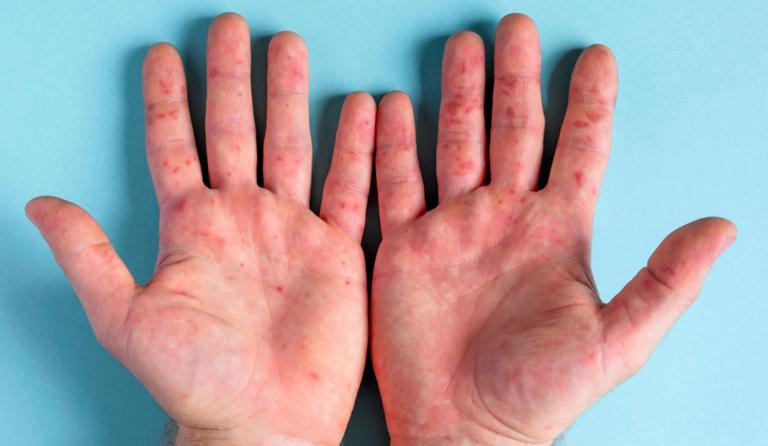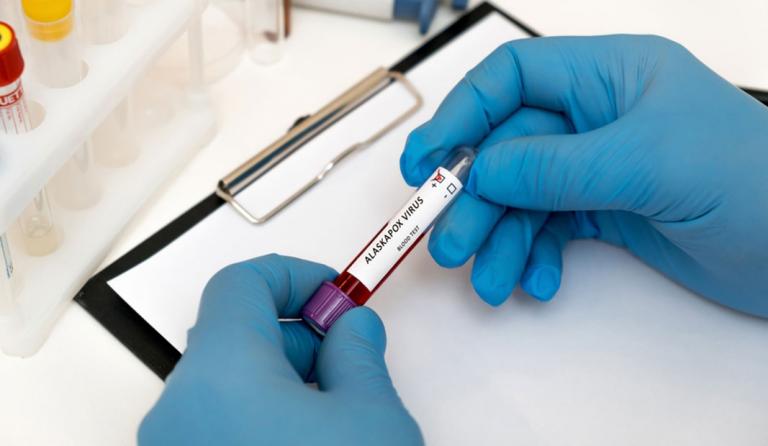An elderly, immunocompromised man who was scratched by a stray cat has become the first person to die from Alaskapox virus (AKPV) infection in the United States. The victim resided in a wooded area on the Kenai Peninsula (Alaska) and had not traveled recently. He lived alone and, as he explained to the doctors who treated him, he was taking care of a stray cat that hunted small mammals and that had scratched him on several occasions. One of the scratches caused a wound near his right armpit a month before he developed a rash.
The deceased had also been working in the garden of his home until September 2023, but did not report any other contact with animals and, although samples were taken from the feline that had scratched him and sent to the Centers for Control and Prevention Diseases (CDC) of the United States, the tests carried out for antibodies and orthopoxvirus have been negative, so, although the scratches of the stray cat constitute a possible source of inoculation through fomite transmission, it has not been possible to determine with certainty the origin of the infection.
This is the seventh case of Alaska smallpox in the state and the first to occur outside of the Fairbanks area – where the first cases of the disease were detected in 2015 in adults who presented with a self-limiting disease consisting of a localized rash and lymphadenopathy. (inflammation of the lymph nodes) – as reported by state epidemiologists on February 9.
Table of Contents
- What is Alaskapox Virus and how is it spread?
- Symptoms of Alaskapox (AKPV) infection
- How Alaskan smallpox is treated
- How to prevent Alaskapox virus infection
What is Alaskapox Virus and how is it spread?
Alaskapox (AKPV) is an orthopoxvirus, which is a double-stranded DNA virus that causes smallpox and includes pathogens such as the one that causes monkeypox. Many of them are of zoonotic origin, such as AKPV, and are contracted by coming into contact with infected mammals. Small mammal testing at Faribanks detected the presence of current or previous AKPV infection in four different species (although primarily in red-backed voles and shrews). Evidence suggestive of prior AKPV infection has also been documented in at least one domestic pet linked to a patient.
The extent of the virus’ geographic distribution and animal reservoirs is still unknown, but experts believe the disease is unlikely to spread widely. However, it is important to note that information on emerging diseases can change rapidly. Viruses can spread outside their original geographic areas due to several factors, such as changes in the movement patterns of animal hosts, global trade, and international travel.
The deceased male is the seventh case of Alaska smallpox reported to the Alaska Section of Epidemiology (SOE), but the fact that it is the first to be detected outside the Fairbanks area “indicates that [el virus Alaskapox] “appears to be more geographically widespread among Alaska’s small mammals than previously known, and warrants increased awareness among clinicians across the state,” officials have warned.

Symptoms of Alaskapox (AKPV) infection
Because Alaskapox virus infection has been identified in very few humans so far, information on its clinical manifestations is very limited. However, the symptoms observed in those affected are similar to those of other viral infections, and include:
- One or more lesions on the skin. Like other viruses in the Poxviridae family, Alaskapox can cause skin lesions or rashes, which may be similar to those seen in infections with other viruses in the same family, such as smallpox or molluscum contagiosum.
- Swelling of the lymph nodes.
- Malaise and fatigue: Patients may experience general malaise or fatigue.
- Muscle or joint pain.
- Fever.
The recently deceased patient suffered other complications, such as infectious cellulitis that affected the mobility of the arm where the main injury was, neuropathic pain, delayed wound healing, malnutrition, acute kidney failure and respiratory failure.
How Alaskan smallpox is treated
Until now, the goal of treatment for Alaskapox virus infection has been the relief of symptoms, since there is no specific antiviral therapy, so it has been based on:
- Manage symptoms, which may include administering medications to reduce fever, relieve pain, or other specific symptoms the patient may experience. SOE experts have recommended prescribing antiviral therapy and intravenous immunoglobulin (IVIg) in Alaskan smallpox patients who are immunocompromised.
- Care of skin lesions, which may require cleaning and care to prevent secondary infections. In some cases, topical or systemic antibiotics may be prescribed if there are signs of secondary bacterial infection.
- General monitoring and support: This includes regularly monitoring the patient’s condition and providing general health support, such as ensuring adequate hydration and rest.
- Isolation to prevent transmission. Since little is known about the transmission of the Alaskapox virus, it is advisable to take precautions to prevent the spread of the virus to others, especially in healthcare settings.

How to prevent Alaskapox virus infection
People who notice a new lesion on their skin and have had recent close contact with wild animals, or pets that may have had contact with them, should see a doctor, especially if they have swollen lymph nodes or fever, or other unusual symptoms.
Alaska state officials have issued a series of recommendations specifically intended for healthcare professionals in affected areas and people living or moving there, including:
- Stay away from wild animals and never touch dead animals.
- Wash your hands very well if you have come into contact with wild animals or their feces, or after spending time outdoors or in places where there may be wildlife (yards or gardens, cabins or sheds).
- If you go out with your pet, avoid interacting with wild animals, or sniffing or eating their remains. To do this, it is best to hold them with the leash when you are in unfenced areas where you can lose sight of them.
- Before traveling to natural areas it is advisable to know their wildlife to prevent risks as much as possible (stinging insects or spiders, poisonous snakes…).
- If you notice lesions on the skin, avoid touching them, keep them dry and covered and take extreme care of hand hygiene. Additionally, avoid sharing clothing or other items that may have come into contact with the injuries, and wash them separately. Although no case of person-to-person transmission has been reported so far, some orthopoxviruses can be transmitted through direct contact with lesions.
- Clinicians should become familiar with the clinical features of Alaska smallpox and consider testing for orthopoxvirus infection in patients with clinically compatible disease. Suspected cases of Alaska smallpox should be reported immediately to the SOE.













